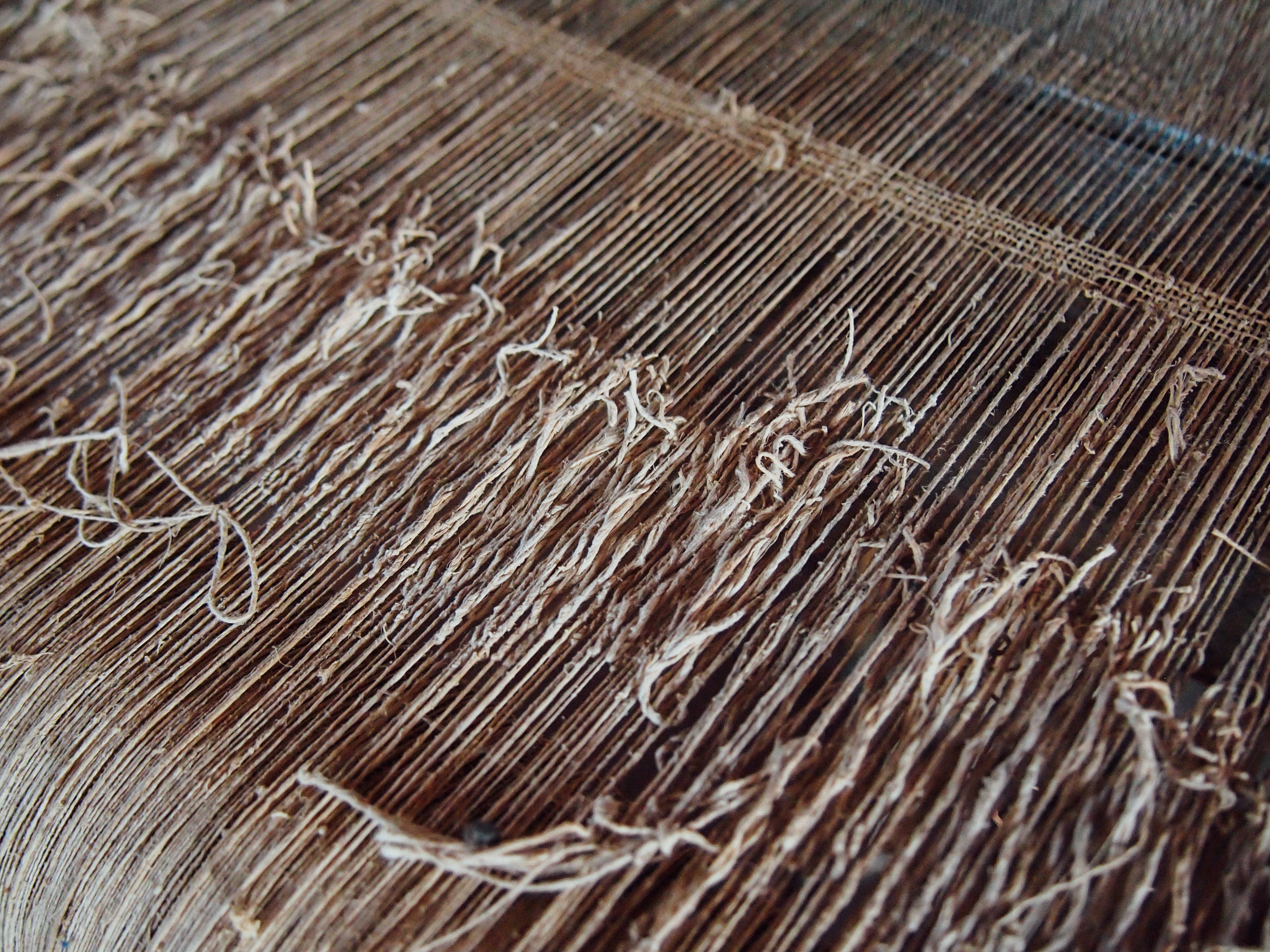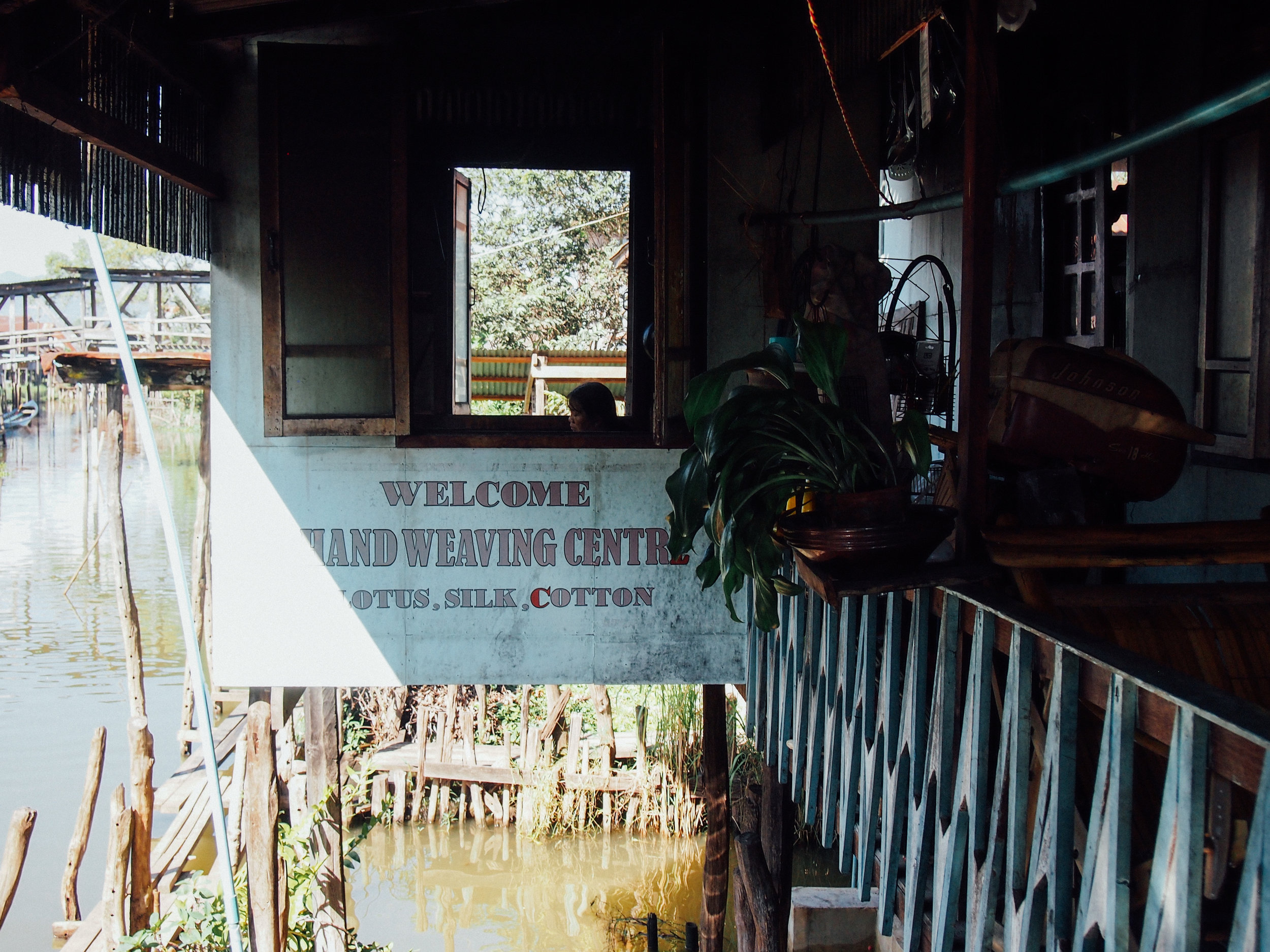Lotus Weaving, Myanmar
Paw Khon village – a floating community located on Inle Lake in central Myanmar – is one of the last places on Earth where you can see the technique of lotus weaving. It has been practised here for a little over a century, but making offerings for Buddhist abbots from supple lotus threads was once widespread in Southeast Asia.
Nowadays, the cloth woven in Paw Khon is mainly exported to Japan in bolts or sold as scarves to the tourists who visit the many weaving studios on the lake. Threads are extracted from the lotus plant by breaking down individual stems. A paintaking process, it can take up to two months to extract one kilogram of fibre. Traditionally, lotus plants would have been collected from the waters around Paw Khon, but due to increased demand for lotus silk, most of the raw material is now brought here from elsewhere in Myanmar.
Lotus stems are first cut into manageable sections before being scored, twisted and pulled to reveal a web of thin filaments. Barely visible to the naked eye, the filament is laid out on a wooden workbench and kept moist with occasional splashes of water. As the process is repeated with new stems, the artisan rolls the moistened fibres together to create a thicker, stronger thread. With a quick roll of the palm, a new length is soldered onto the last to form one continuous thread. This particular workshop, the Hand Weaving Centre, can produce around 20 metres of thread per day. The finished thread has a variegated colour similar to hemp but with a much softer feel. It is typically left undyed to highlight these natural qualities.
Because of the time-consuming nature of the thread-making process, pure lotus cloth is rare and expensive, retailing at up to 400 USD per piece. For this reason, it is often mixed with cotton or silk. At Paw Khon, women use mechanised and flying shuttle looms to weave brightly coloured Shan scarves and subtler designs that combine lotus thread and washed silk to achieve a textural contrast between warp and weft. View the full article on Wander-Lush.









